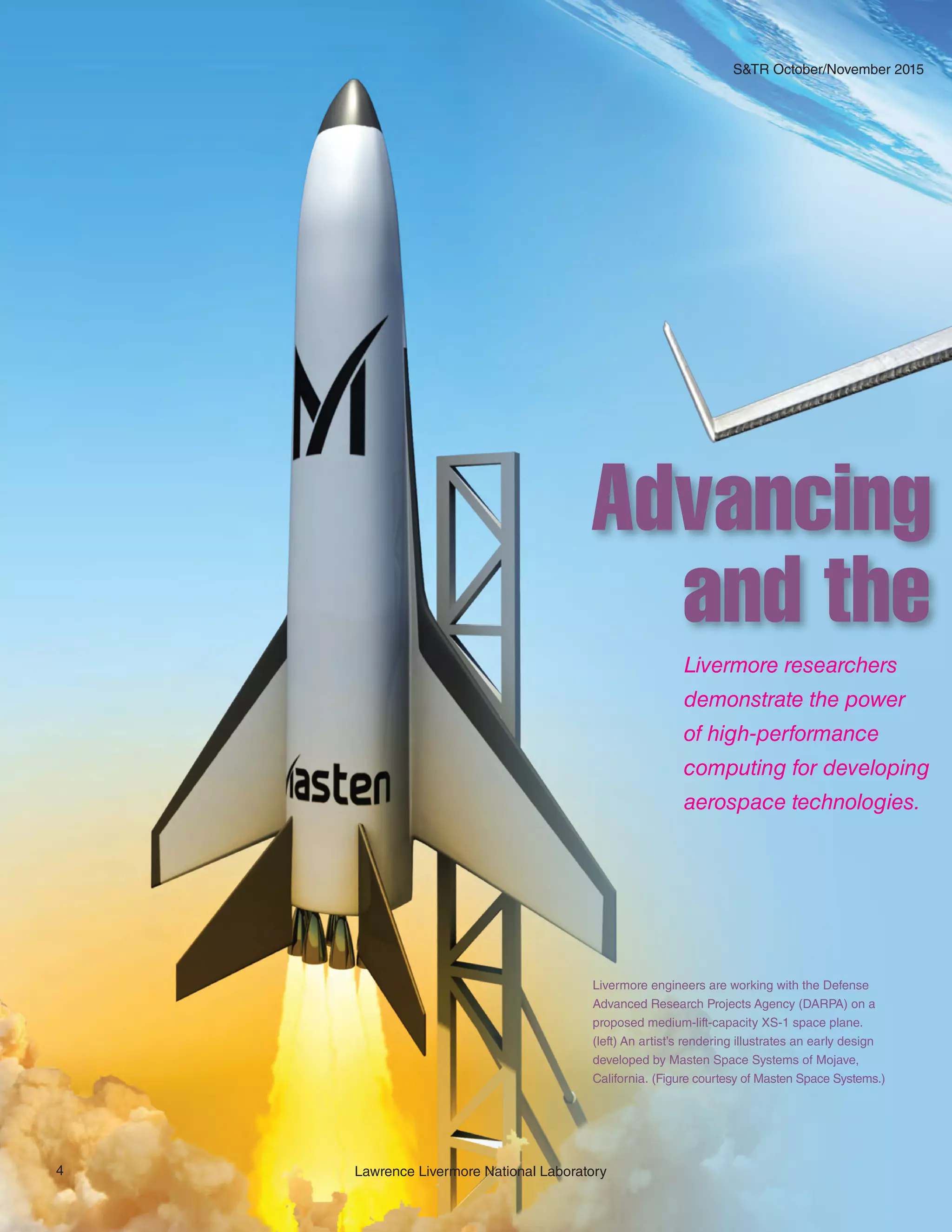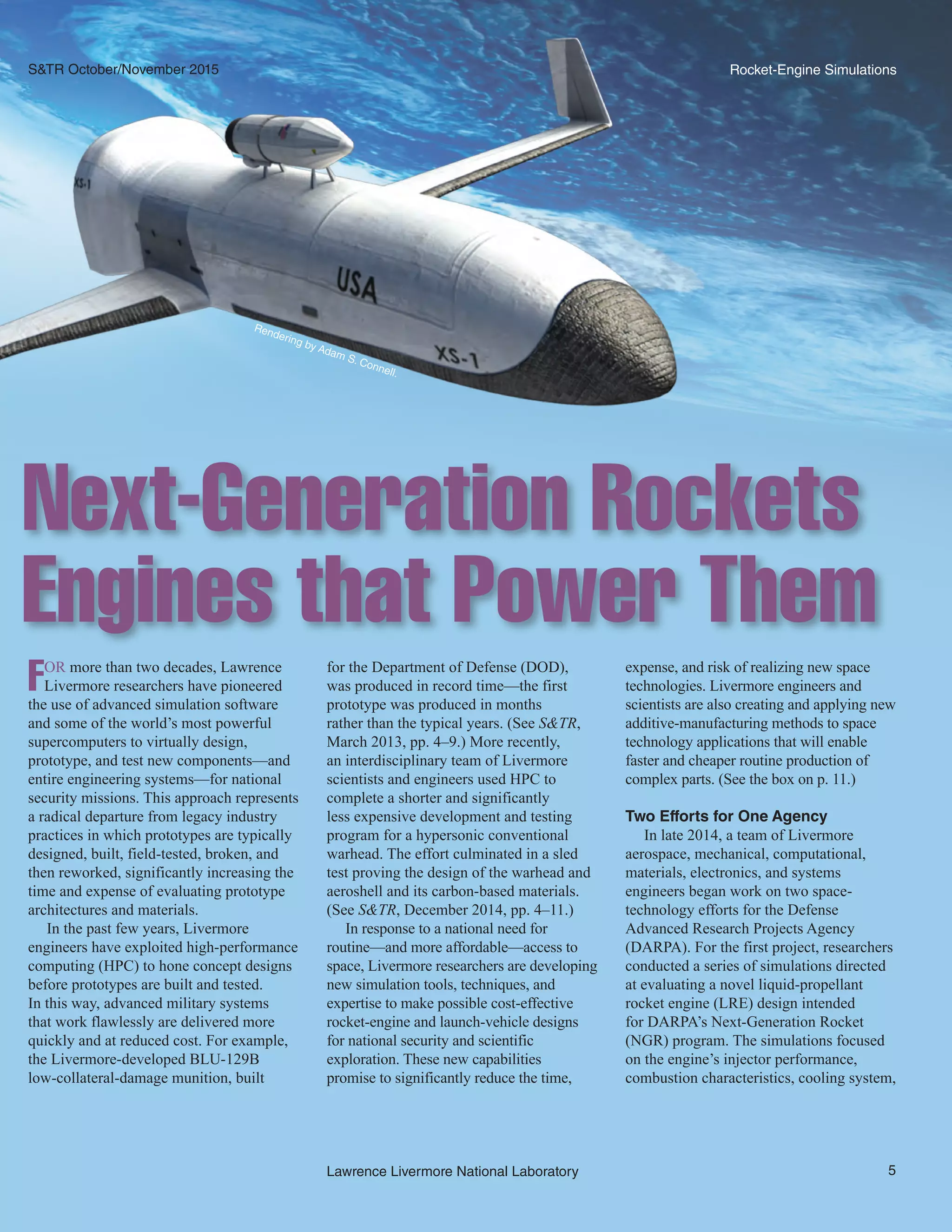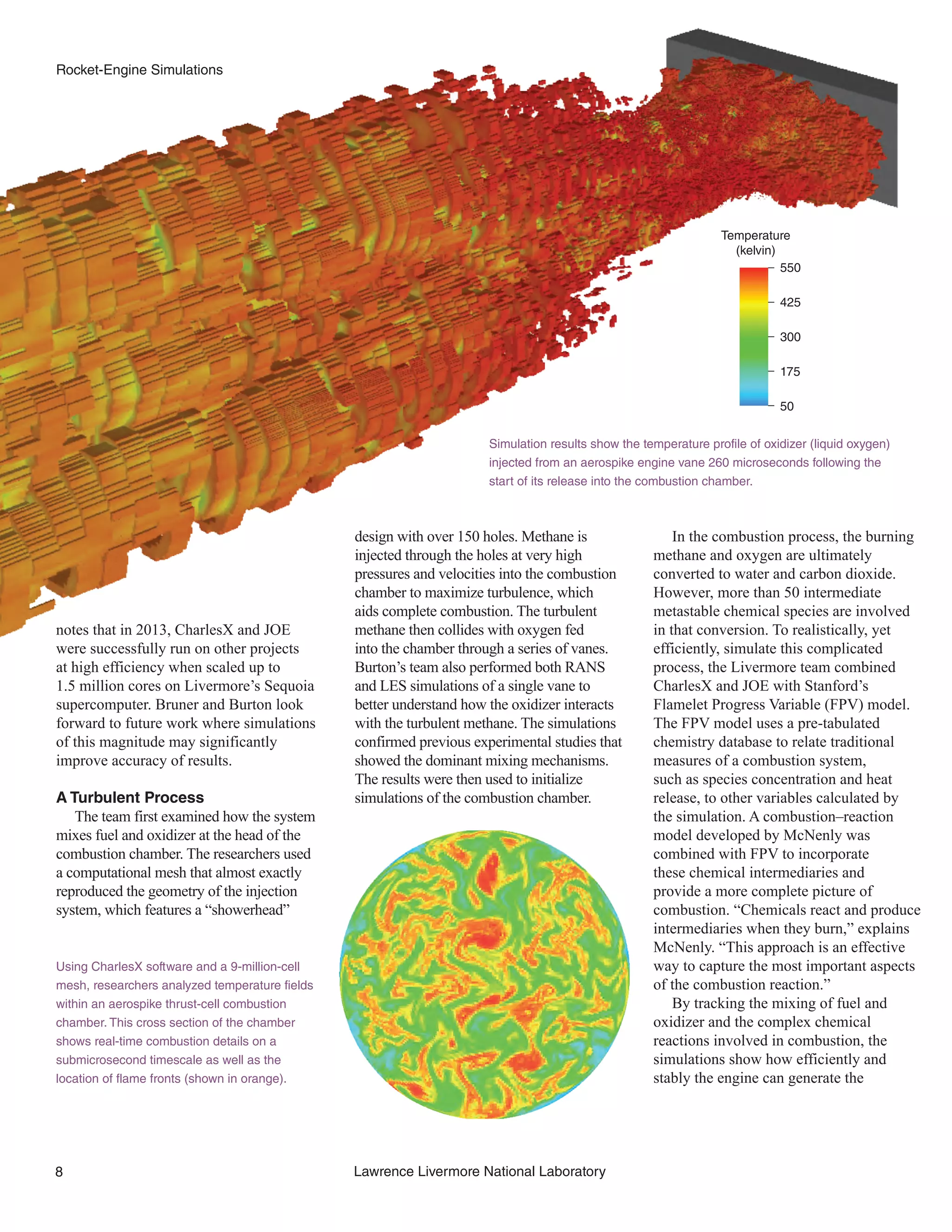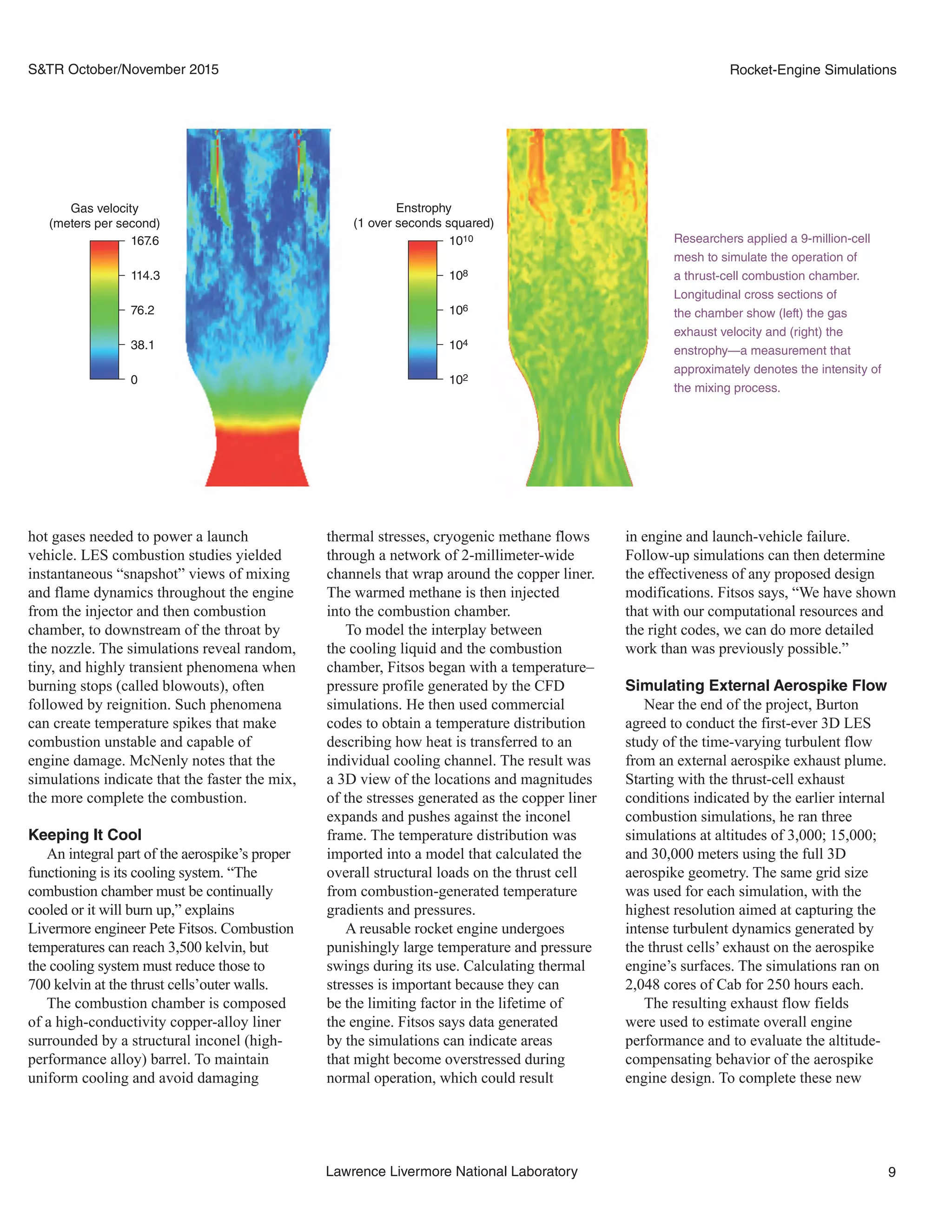Lawrence Livermore National Laboratory is leveraging high-performance computing (HPC) to advance aerospace technologies in collaboration with DARPA, focusing on innovative rocket-engine designs and manufacturing methods to reduce costs and development time. They are particularly developing a novel liquid-propellant rocket engine and a reusable launch vehicle, the XS-1, aimed at enabling more affordable access to space. The use of simulations and advanced computing techniques allows for efficient design, testing, and potential improvements over traditional methods, significantly enhancing the viability of U.S.-made rocket technology.







